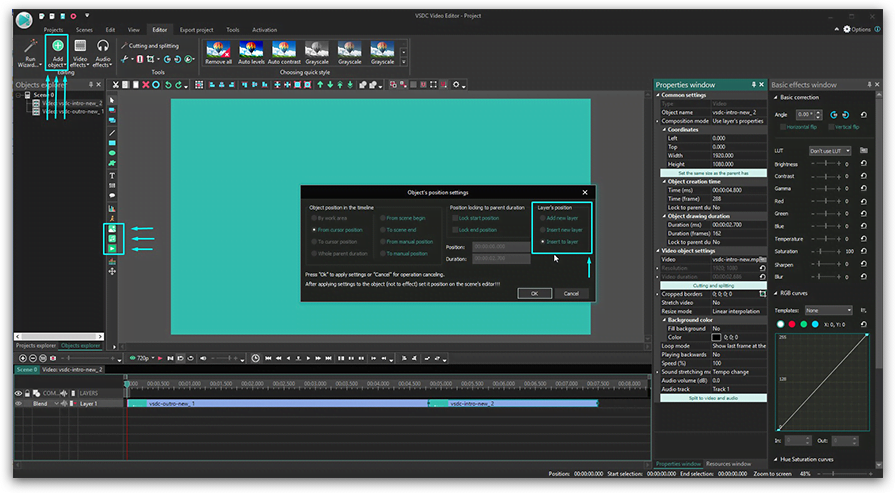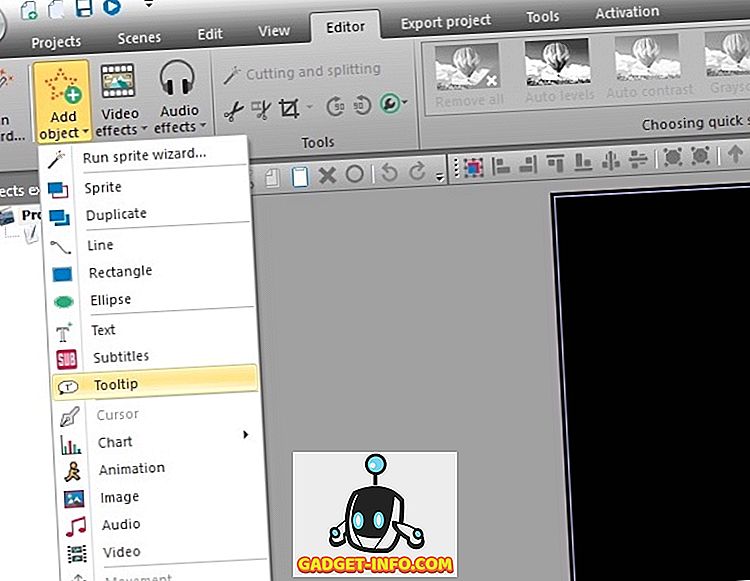
- #How to export video from vsdc video editor install
- #How to export video from vsdc video editor free
- #How to export video from vsdc video editor windows
In my testing, re-running that command overwrote (without prompting) an identically named file already found in the folder. Then I re-ran the first command (above) to export PNG images from that 18-minute rump piece. I used FFmpeg to produce a copy of the last 18 minutes with this command (see additional notes): ffmpeg -ss 01:31:24 -i input.mp4 -c copy output.mp4 Conversion failed!” I confirmed that the timing was right: 1:31:25 was indeed the point in this video from which FFmpeg produced its last image. For that 91-minute pice, the export rate was roughly 2.3 hours of exporting for every hour of video.īut in this first run, the process terminated at that point (i.e., 1:31:25) with an error: “Video encoding failed.

Give or take a half-hour, extracting the individual images from this video took maybe 3.5 hours. I was occupied elsewhere when the command finished running.

It began producing output PNG files named frame-0000001.png et seq. In this later instance, the duration of the source video was 1:49:23 (720×480, 29.97 fps). The next several paragraphs provide further detail on this step of producing individual output images, based on that later effort. It worked, with a remark suggesting that possibly the command could use some improvement (i.e., “deprecated pixel format used, make sure you did set range correctly.” The output files seemed OK, so I ignored that remark.īrief interjection: I returned to this post later and tried these steps with a different video. Then I ran the command, after modifying it to refer to _input.avi rather than input.avi. The leading underscore would cause it to be listed first among the thousands of image files that would soon be arriving in that folder. I needed lots of digits: there were lots of individual frames. Monline seemed to say that the “%07d.png” part of that command told FFmpeg to produce output image files with seven-digit names like frame-0000001.png.
#How to export video from vsdc video editor windows
That would allow opening a command prompt in the desired folder directly from Windows Explorer.
#How to export video from vsdc video editor install
An easy alternative to using Windows commands to change drives (e.g., D:) and directories (e.g., cd “top foldersubfolder”), so as to move the command prompt to the desired folder, was to install and use the Open command window here context menu option. The command also had to be run in the folder where the input.avi file (or whatever it was named) was located. To work, that command required that FFmpeg be installed. For this, Monline recommended something like this command, entered on the Windows command line: ffmpeg -i input.avi -f image2 frame-%07d.png The first step was to convert the video into individual image files. Note that Windows can take hours to move, copy, delete, or otherwise perform file operations when you are dealing with tens of thousands of files. Another advantage, for a later project described below, was that FFmpeg would accept thousands of files, whereas my normal video editing program (Adobe Premiere Elements) would crash when confronted with a load like that. The advantage was that FFmpeg (at least as used here) was lossless. I wanted to cut out the center and join the left and right pieces.
#How to export video from vsdc video editor free
I hoped that VisiPics, a marvelous free duplicate image identifier, would help me with that (see also duplicate detectors like DoubleKiller). First, there were some individual frames I wanted to delete, and I didn’t want to have to pick them out manually in a video editing program. There were two types of edits that I wanted to perform. This is the tale of that quest - which, as it turned out, was successful, with steps that (once figured out) were somewhat time-consuming but not too hard. It seemed that one way to alleviate those problems, while losing little (if any) quality, would be to convert each of that video’s frames into individual image files, edit them in bulk, and then convert those images back into video. As detailed in another post, it came from a screen capture of a Google Street View route.

Speeding Up the Video: Framerate and Narration Later: Attempting to Produce the Video with FFmpeg

If you see a path that doesn’t make sense, that may mean I am losing this battle.Ĭreating and Viewing the Individual Images Note: WordPress inexplicably removed all backslashes from this post, and from some others. This post describes how I divided a video into individual images, one per frame edited those images in bulk and then combined them back into a video.


 0 kommentar(er)
0 kommentar(er)
